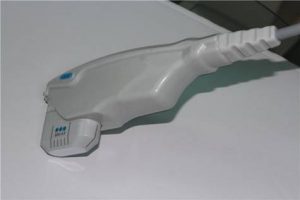

However, it is exceedingly difficult to remove the debris quickly and sufficiently using this method, and the residue is often left behind. In many facilities, the debris is usually removed by scrubbing the tip of the knife with gauze soaked in saline or pronase. Therefore, the adherent debris needs to be removed frequently during the procedure, and the improvement of the debris removal technology is one of the important issues for safe and efficient ESD. Which suppresses the current flow to the tip, resulting in its reduced incision and coagulation capabilities. All rights reserved.In recent years, endoscopic submucosal dissection (ESD) has been performed to treat early‐stage gastrointestinal cancer.ĭuring ESD, carbonized clots and tissue (debris) tend to adhere to the tip of the ESD knife,

Social system factors showed a strong impact on the games persuasive capacities and its autogenous intent.ĭesign Health behavior change support system Lifting and transfer techniques Serious gaming.Ĭopyright © 2016 Elsevier Ireland Ltd. A post-hoc test revealed that from an average of 10 playing sessions or more, the dashboard score and the game score align, which indicates behavioral change towards executing appropriate static lifting and transferring techniques.ĭata gathered in the final field test shows an in-game training effect, causing players to exhibit correct techniques for static lifting and transferring techniques but also revealed the necessity for future social system development and especially regarding intervention acceptance. (c) Regression analysis showed an increase of the game score and dashboard score when more sessions were played, indicating an in-game training effect. An expert panel on lifting and transferring techniques validated the provoked in-game activities as being authentic. This design process also addressed the behavior shaping capacities of the game and its place within the health behavior change support system.

(b) Building and testing (subcomponents of) the prototype resulted in design choices regarding players perspective, auditory and visual feedback, overall playability and perceived immersiveness. This led to a shift in focus from a serious game teaching lifting and transferring techniques to a health behavior change support system containing a game with the intention to influence behavior. All groups considered their workload, time pressure and a culturally determined habit to place the patient's well being above their own as the main reason not to apply appropriate lifting and transferring techniques. (a) Occupational Therapists, Nurses and Caregivers did not recognise a lack of knowledge with training in lifting and transferring techniques. (c) Field experiment: We performed a dynamic analysis in order to investigate the feasibility of the prototype through biometric data from player sessions (n=620) by healthcare professionals (n=37). An expert panel conducted analysis of video-recorded playing activities. (b) A design science research approach resulted in a playable prototype. We interviewed experts (n=5) on the subject of lifting and transferring techniques. (a) To define the problem space, use context and user context, focus group interviews were conducted with Occupational Therapists (n=4), Nurses (n=10) and Caregivers (n=12) and a thematic analysis was performed.

In this article, the design and development of such a health behavior change support system is addressed, describing cycles of design and evaluation. The main focus was not on testing for the effectiveness of the game itself, but rather on the design of the game as an autogenous trigger and its place in a behavioral change support system. The goal of the iLift project was to develop a game for nursing personnel to train them in lifting and transfer techniques. In the Netherlands over 40% of reported sick leave is due to back problems, mainly caused by carrying out heavy work. Lower back problems are a common cause of sick leave of employees in Dutch care homes and hospitals.


 0 kommentar(er)
0 kommentar(er)
